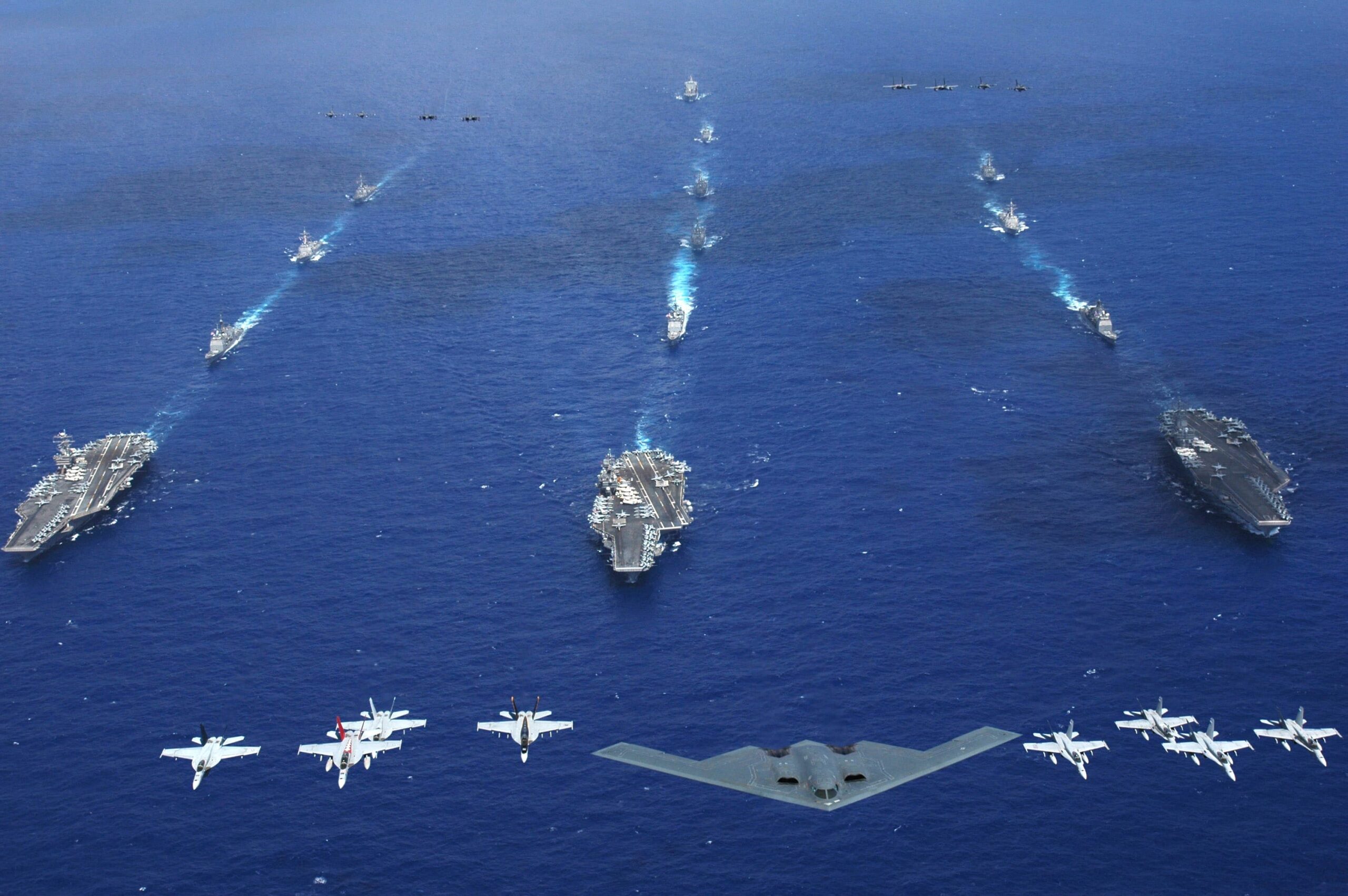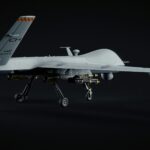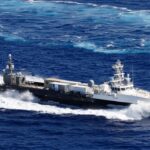The Pentagon has filed its fiscal 2026 request with Congress. Defense officials confirm the document sets aside $47.3 billion for 19 new battle-force ships, more than tripling last year’s ship total.
That shipbuilding line sits inside a record $1.01 trillion national defense package. According to industry sources, the Navy’s share is $231 billion, of which 21 percent goes to procurement and 15 percent to research and development.
New US Navy Ships Authorized in Fiscal 2026 Budget
The Navy plans to keep the active fleet at 287 battle-force hulls but swap out older ships for modern designs that carry heavier sensor and weapon loads. Service accountants say the approach limits long-term operating costs while raising combat punch.
Ship types budgeted for FY 2026
- 1 Columbia-class ballistic-missile submarine
- 2 Virginia-class attack submarines (Block VI)
- 2 Arleigh Burke Flight III destroyers
- 1 America-class amphibious assault ship
- 1 San Antonio Flight II amphibious transport dock
- 9 Landing Ship Mediums
- 2 John Lewis-class fleet oilers
- 1 T-AGOS ocean-surveillance vessel
Our analysis shows this mix leans hard on undersea deterrence, distributed amphibious lift and stronger logistics legs.
Tensions with China drive the undersea focus. The People’s Liberation Army Navy fields about 730 hulls, including more than 60 submarines. U.S. admirals say Washington must keep a stealth edge rather than match Beijing ship for ship.
The Columbia boat accounts for roughly $9.8 billion of next year’s request. Program managers note that advanced welding robots and modular sections should hold the schedule on track for the first strategic patrol in late 2032.
The two Virginia-class submarines follow the Block VI profile. They carry the larger Virginia Payload Module for 28 long-range missiles and employ a new quieter propulsor derived from the Columbia class. Yard officials at Electric Boat say workshare splits with Newport News stay unchanged.
Surface Combatants and Amphibious Ships in 2026 Navy Budget
Surface combatant dollars focus on radar capacity. Each Arleigh Burke Flight III destroyer delivers up to 48 percent more SPY-6 array area than Flight IIA ships, raising long-range tracking volume against ballistic and hypersonic threats. Hulls 141 and 142 will start fabrication in Pascagoula and Bath next spring.
Amphibious planners secure one America-class big-deck. Navy-Marine leaders argue these ships give commanders aviation-centric options short of sending a carrier. The accompanying San Antonio Flight II adds command spaces sized for crisis-response staffs.
Nine Landing Ship Mediums form the heart of the Marine Corps’ new littoral regiment concept. Each 200-foot craft moves an infantry company with vehicles and uses a shallow draft to beach in Pacific island estuaries. Textron and Austal split the first production lot after a design sprint kept weight under 3,000 tons.
Expanding Navy Logistics Capacity in FY 2026 Shipbuilding Budget
Logistics lines matter in two theaters. The John Lewis oilers extend carrier groups east of Taiwan without foreign port calls. The T-AGOS surveillance hull expands the undersea cueing network that now watches Houthi drone boats entering the Red Sea from the Bab-el-Mandeb Strait.
Middle East commanders welcome the extra lift. Recent missile and drone harassment around the Strait of Hormuz forced destroyers to sail past planned overhaul dates. Fleet logistics officers say a larger oiler force frees destroyers for escort duty instead of emergency refueling runs.
Industrial-base resilience gets its own wedge of cash. The budget sets $1.3 billion for supplier-capacity grants and allocates $2.5 billion for naval-shipyard modernization, including new dry-docks at Pearl Harbor and Portsmouth. Lawmakers from Maine and Mississippi back $740 million for workforce development at Bath Iron Works and Ingalls.
FY 2026 industrial initiatives
- Expand submarine module plants in Quonset Point, R.I.
- Automate weld inspection across Gulf Coast yards
- Establish a west-coast surface-combatant test center near San Diego
- Stockpile high-temperature alloys for next-generation missile tubes
Defense officials add that money for these projects goes through the National Defense Stockpile Transaction Fund, insulating it from annual operating caps.
Congressional Funding and Legislative Oversight on Navy Shipbuilding
Congress wrote the ship list into both the base bill and a reconciliation package worth another $26.5 billion. Armed Services leaders expect mark-ups to start the week of 7 July. Senate staff warn that sequestration rules will snap back next spring if a topline deal slips.
China watchers note that the PLA Navy launches about 20 hulls a year, yet many sealift and corvette classes lag U.S. survivability standards. Retired Vice Adm. Michelle Howard tells Defense-Aerospace that the challenge is not sheer count but the pace of improvement. She urges focus on sensors, software and contested logistics.
Increased R&D Investment for Directed-Energy and Satellite Systems
Budget writers seem to agree. Research and development spending rises 11 percent, with $4.2 billion marked for shipboard directed-energy weapons and $1.9 billion for secure, low-earth-orbit satellite coms. A similar targeted funding approach is seen in the Air Force’s 747-8 conversion using Sentinel program resources. Program managers see those projects feeding into Flight IV destroyers and the SSN(X) submarine later this decade.
Contractors face tight labor markets. Huntington Ingalls Industries projects it must hire 5,400 workers in 2026 just to hold current man-hours. The company plans tuition grants and a new four-year apprenticeship that merges trades and digital twin modeling. According to industry sources, first-year applications already exceed program seats.
Supply-chain risk also lingers. Rare-earth permanent-magnet motors come from a single domestic line in upstate New York. Lawmakers inserted a $120 million incentive to expand that facility and add a second plant in Texas.
Navy Munitions and Hypersonic Weapons Procurement
Beyond platforms, the Navy earmarks $6.5 billion for conventional munitions and $3.9 billion for hypersonics. The Maritime Strike Tomahawk, LRASM and SM-6 get multi-year contracts that promise double-digit savings by locking in steel and micro-electronics buys.
The budget leaves some gaps. A follow-on frigate design, formerly FFG-62, receives only $115 million for concept refinement. Navy planners say they will revisit production after the first pair of frigates finishes builder’s trials in 2027.
Congressional negotiators will also weigh a White House proposal to suspend statutory tonnage goals. Supporters argue that mission outputs, not hull count, should judge fleet readiness. Skeptics warn that dropping a numeric target may sap long-term industrial planning signals.
Regional commanders already plan force rotations around the new build schedule. Indo-Pacific Command wants the first two Landing Ship Mediums in Guam by 2029. Central Command prefers to base the T-AGOS in Bahrain where acoustic surveys can start in the Persian Gulf earlier than planned.
Stakeholder Influence on Navy Budget and Ship Delivery
Financial analysts track the House Budget Committee for clues on offsets. Early drafts suggest trimming Army end-strength by 12,000 and deferring one Space-Force launch site. Neither change affects the ship total, but they hint at the bargaining still ahead.
Stakeholders outside government also weigh in. The National Shipbuilders Association praises the steady drumbeat of orders. Labor groups push for stronger “Buy American” add-ons to protect steel and electronics jobs. Shipping companies prefer faster oiler delivery so commercial tankers can leave charter contracts earlier. Each constituency will press for floor amendments.
Cyber defense remains intertwined with fleet plans. The request adds $15.1 billion to secure afloat networks and certify ship control systems against zero-day exploits. Program officials link funds to a classified threat assessment completed in May that highlighted supply-chain firmware risks.
REFERENCE SOURCES
- https://www.reuters.com/business/aerospace-defense/trump-wants-more-drones-missiles-fewer-f-35s-893-billion-budget-request-2025-06-26/
- https://news.usni.org/2025/06/26/department-of-the-navy-fiscal-year-2026-budget-highlights
- https://armyrecognition.com/news/navy-news/2025/breaking-news-u-s-navy-to-receive-19-new-warships-in-2026-budget-to-counter-china-and-middle-east-tensions
- https://www.defense.gov/News/Transcripts/Transcript/Article/4228828/background-briefing-on-fy-2026-defense-budget/
- https://www.stripes.com/branches/navy/2025-06-26/navy-budget-ships-18252369.html
- https://breakingdefense.com/2025/06/navys-2026-shipbuilding-budget-seeks-just-3-warships-in-base-request-16-in-reconciliation/



